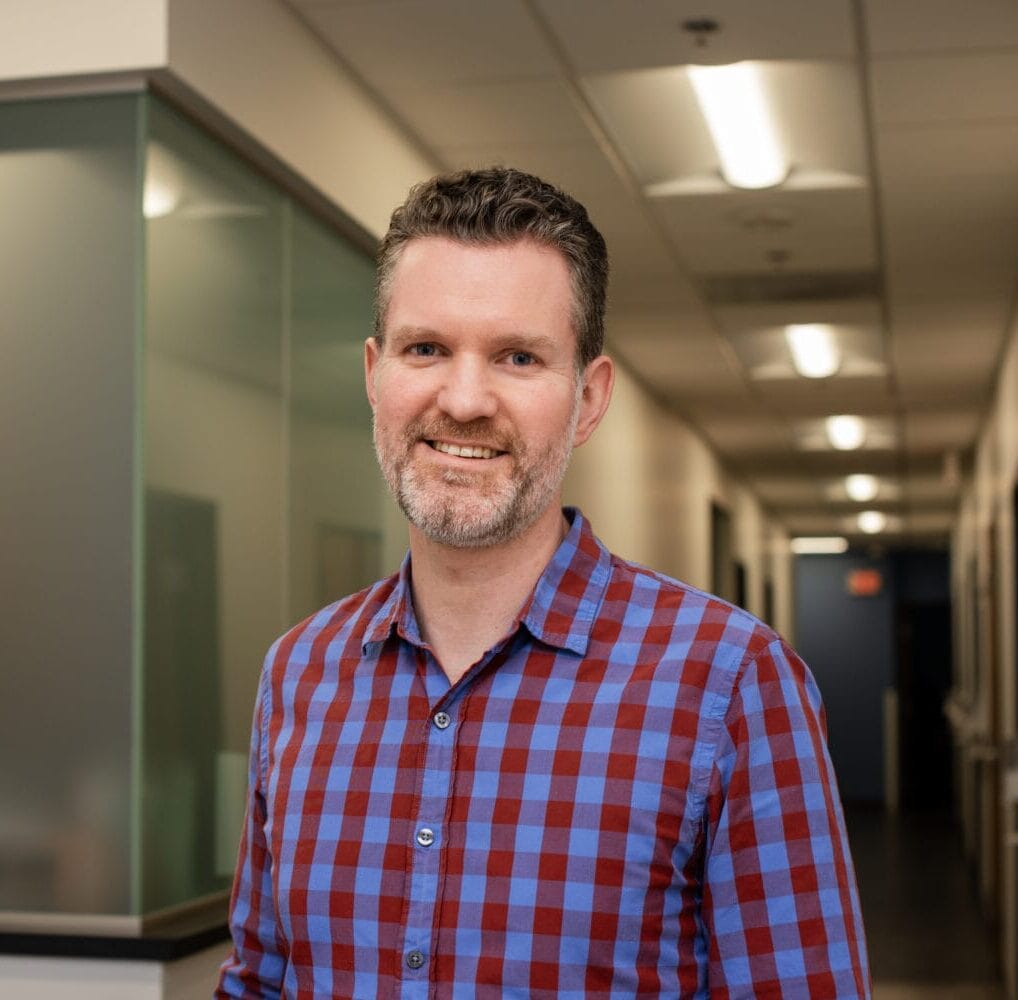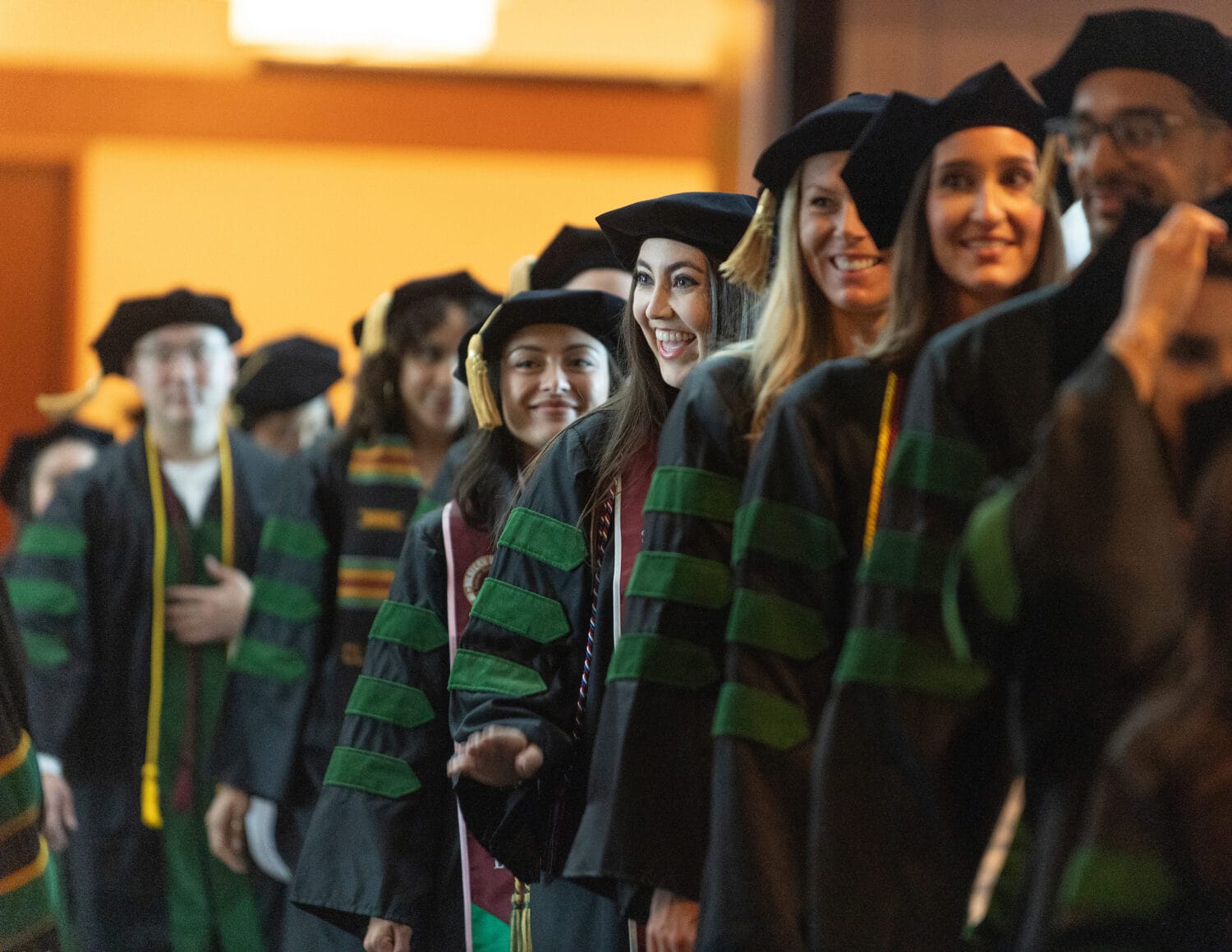WesternU holds Trends in Autism Conference
The 14th Annual Trends in Autism Conference at Western University of Health Sciences featured diverse approaches to treating autism, with the goal of “Putting the Puzzle Pieces Together.”
The conference, held April 18, 2015, featured keynote speaker Patricia S. Lemer, MEd, NCC, MSBus, author of “Outsmarting Autism: The Ultimate Guide to Management, Healing, and Prevention.” She spoke about “Thinking Beyond Labels: Why So Many Developmental Problems, and What We Can Do About It.”
Lemer is a licensed professional counselor, and practiced as an educational diagnostician for more than 40 years. She lectures internationally on developmental delays, including autism spectrum disorders. Lemer explained her “total load theory,” which examines the causes of autism spectrum disorder and other diagnoses.
“The body is like a bridge. It can only handle a certain number of stressors,” she said. “And it’s the cumulative effect of these stressors that breaks down the bridge, or the body. Each time you have an exposure to a toxin, or take an antibiotic or have another issue, you approach your threshold. And then something comes that is the straw that breaks the camel’s back that puts you above the threshold, and now you have a diagnosis. Your diagnosis may be ADD or learning disabilities. What we do when we heal is we peel off those layers.”
Parents are having children at an older age than in previous generations, passing along higher body burdens to their children. And we’re living in a much more toxic world, which results in many more sick people, she said.
“The body’s top priority is staying well. It’s going to put all its energy into digestion, and into circulation, and into thinking,” Lemer said. “It’s not going to be available for social, emotional and language issues. If you want your child to sit still and pay attention, forget it. If he’s toxic, his body isn’t going to do that. He’s going to say, ‘I’ve got to digest this morning’s breakfast.’ The degree of overload determines the diagnosis and we have to learn which of those load factors are taking up room.”
Genetics load the gun and environment pulls the trigger, she said. No single factor causes autism; rather, it’s the total load of all these factors that accumulate.
Lemer suggested people get a genetics test from a service such as 23andme.com. A hot topic is epigenetics, the study of changes in gene expression caused by environmental factors.
“You as a person, a mom, are passing on your epigenetics to your unborn child, not your genetics,” Lemer said. “You are passing along who you were, triggered and tweaked by the environment in which you live. These gene mutations are showing up in multiple generations because we keep getting tweaked. This explains the range of responses to treatments, why some kids respond to a special diet and others don’t. So it’s very important to know who you are and who your child is so we don’t have to go through guesswork to treat you.”
Everybody is unique, and restoring health is like restoring a fine painting. You have to know the history of that painting, Lemer said.
“It takes somebody at least as long to get well as it did to get sick,” she said. “I want to get to those kids as soon as they start having the signs – ear infections, allergies, eczema, caloric stenosis, reflux – those are all pushing that kid up that toxic load ladder.”
Her five steps to treating autism: take away the bad stuff and add back the good stuff; correct foundational issues; address sensory problems; focus on communicating, interacting and learning; and plan for the future. The first step focuses on detoxifying and cleaning up your environment.
“It’s really basic. It’s about food and air and water and sleep,” Lemer said. “From today on, think about every single time you buy your next product – when you run out of toilet paper, toothpaste or deodorant. Buy the least toxic one you can afford. In many cases you can make your own. Please clean up your environment. The fewer toxins we expose our family to, the fewer genetic tweaks are going to happen.”
The fourth step is the one many people focus on first when dealing with autism – communication, social and learning skills.
“This is what our society values the most. We want our kids to have friends. We want them to talk. We want them to have communication and relationships. We want them to be literate. But you can’t go here first,” Lemer said. “Unfortunately this is the first place that families turn. The first place that pediatricians send our kids is to the SLP (speech-language pathologist).”
A good speech pathologist knows these problems start with oral motor issues, where the musculature of the lips and tongue and cheeks are not working together, she said. Children have sucking problems or breathing problems, and they can’t talk as a result.
“So a good speech pathologist knows this and co-treats with an occupational therapist, moves her therapy from very general to more specific, and understands the relationships between language and behavior,” Lemer said.
The fifth step, planning for the future, was especially pertinent to the conference’s master of ceremonies, Lillian Vasquez, who is founder and director of the KVCR Autism Initiative, which has a mission to achieve positive actions that substantially reduce the negative impacts of autism. Her 22-year-old son, Grant, has autism and will soon transition from school to work.
“I feel at this point I’m starting all over,” Vasquez said. “I feel like he’s 3 and we’re fighting for services. He’s transitioning out in six months. I have been working on something for four years, trying to figure out where he’s going to go. We’re in the discovery process of what Grant is going to do as a career.”
Vasquez must start over because there are therapies available now that didn’t exist when Grant was born, Lemer said.
“We have to figure out where are they going to go for the rest of their lives, and what are they going to do for a job. How are they going to have a meaningful life?” she said. “We also have to revisit all of these therapies that didn’t even exist when her child was born. We know so much more about how to look at our children biologically. The supplements we have now are remarkable. And we have to start at point zero again.”
The conference followed two tracks, one for parents and families and one for clinicians and scientists. The Trends in Autism Conference is organized by WesternU’s Faculty for Autism Collaboration and Education (FACE), an interprofessional team of educators, clinicians and researchers that promotes integrated perspectives, activities and resources that serve to enhance the lives of individuals with ASD, and the lives of their significant others.
Lemer’s approach to autism aligns with the goals of FACE, said FACE Chair Gail Singer-Chang, PsyD, MA, MS.
“Her passion is to help people understand the diverse perspectives involved in autism and help them connect with resources they might need for somebody who has autism,” she said. “The reason that’s important is no two people are going to have the same picture or same treatment. The diversity of options and understanding how all these different aspects from different professional realms and perspectives fit together is very important.”
WesternU’s interprofessional approach to health care education was exemplified by the faculty speakers at the conference: Drs. Dee Schilling and Mary Hudson-McKinney from the College of Allied Health Professions’ Department of Physical Therapy Education, Drs. Jerry Minsky and Yawen Peng from the College of Dental Medicine, Dr. Kristy Remick-Waltman from the College of Optometry and Drs. Douglas Ethell and Xiaoning Bi from the Graduate College of Biomedical Sciences.
Thank you to the sponsors and supporters of the Trends in Autism Conference: BBK Psychotherapeutic Services, WesternU’s Harris Family Center for Disability and Health Policy, KVCR, Pomona Valley YMCA, the San Gabriel/Pomona Parents’ Place, Queen of Hearts Therapeutic Riding Center, AMC Theatres, Glutino, Mrs. Rona Singer, Sam’s Club, Stater Bros. Markets, Panera Bread, Autism College, The Autism Channel, Children’s Opportunity for Brilliance and WesternU’s Patient Care Center.



